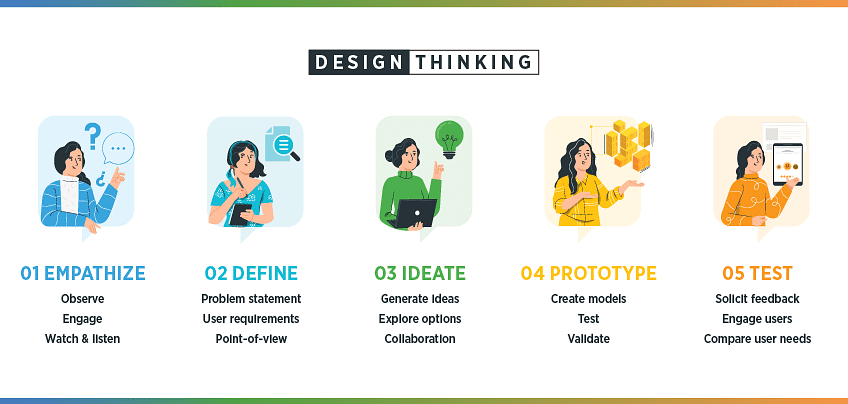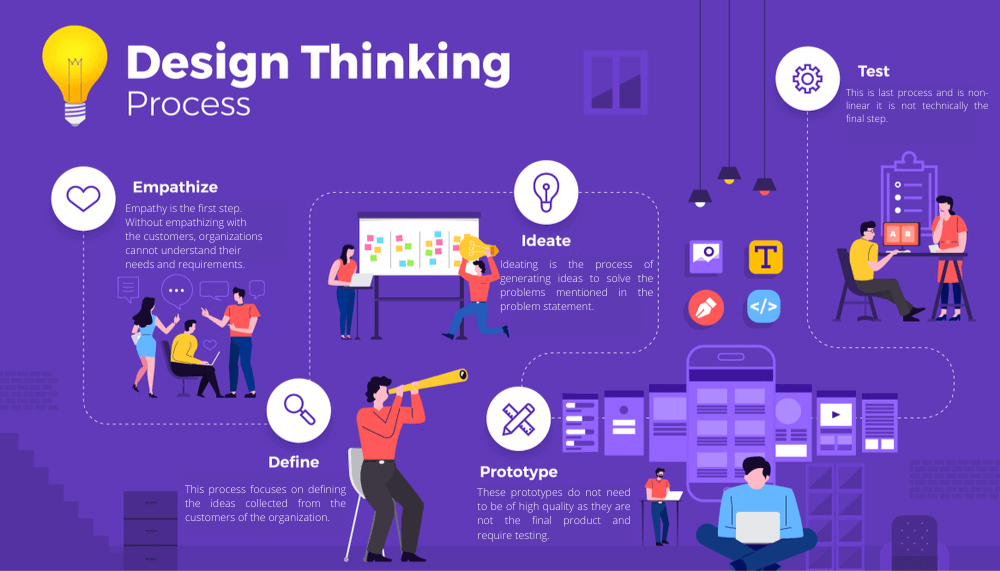Table Of Content

This stage is often completed by a core project team who share their results with the broader team during Design Thinking workshops. You can (and should!) still collect user insights during tests—view session recordings, heatmaps, and even ask users for feedback when they’re in an A/B test variation. A/B testing allows you to test a design change on users and measure its impact over the original version, known as the ‘control’. You can also manually evaluate ideas by creating post-its for each idea and mapping them onto a prioritization grid that plots high-to-low user value against feasibility. Your best ideas will give high value to users and be easy to implement (aka feasible). Showing them Hotjar recordings of user sessions makes them empathetic when our users stumble, and it gives them a sense of pride when they see a user complete a task they just worked on.
The Ultimate Guide to UX User Stories [With Examples]
Depending on the scale and complexity of the opportunity, the Empathy step can take just a few days or up to several months, as was the case in the Gillette Guard example above. Staged frameworks are designed to help organizations integrate the iterative design process. The Integrated Design Thinking framework at Konrad is divided into three major stages containing a total of seven steps. The Design Thinking framework provides a convenient mental model of the decision making process. It breaks the innovation process into simple steps, and helps teams know where to focus and when.
Browse UX / UI Design Topics
Empathy mapping gives you a single source of truth that’s easy to share with your stakeholders (who may be removed from the product’s end users), helping you get buy-in for design changes along the way. They are happy to explore new areas, and the possible solutions of the problems are based on their feelings without any reasoning. Their magic word is validity, meaning that if you do something, it produces the results that you want. Through its four stages, it teaches how to assess situations with an unbiased view, ideate without assumptions, and continually experiment, test, and reiterate for better results. Whatever method you choose, remember that all ideas are possible solutions.
Common misconceptions and challenges in Design Thinking
Wicked problems demand teams to think outside the box, take action immediately, and constantly iterate—all hallmarks of design thinking. You’ve brainstormed, come up with all sorts of ideas, and worked with your team to boil those ideas down to the ones you think may actually solve the problem you’ve defined. It is also important to interview and understand other stakeholders, like people selling the product, or those who are supporting the users throughout the product life cycle.
Creative Workflow Management: Tips to Amp Up Your Creative Work
Wireframes focus on what elements will appear on key pages and how users will interact with them. They are usually devoid of stylistic choices, such as color and typography, to concentrate on usability and function. This allows teams to test and refine ideas without the distraction of visual design elements. An important point is that designers should be aware of the gulf that can exist between stakeholders and design team members. A brand’s level of UX maturity can have a significant bearing on what a designer does—and how—within a design process.
In this stage, designers are tasked with stepping into their users’ shoes. This enables them to comprehend not just what their users require from a product or service, but additionally why those needs exist. Understanding these nuances can lead to innovative solutions that genuinely resonate with real users. Testing with real users is essential because everything is ultimately about the people who will use your products, and that is the true nature of the design thinking model. After you collect insights from users, it’s time to revisit the problem statement and reflect on how well the prototype is meeting needs and resolving frustrations.
During the prototype phase, you and your team design a few different variations of inexpensive or scaled down versions of the potential solution to the problem. Having different versions of the prototype gives your team opportunities to test out the solution and make any refinements. Currently, one of the more popular models of design thinking is the model proposed by the Hasso-Plattner Institute of Design (or d.school) at Stanford. The main reason for its popularity is because of the success this process had in successful companies like Google, Apple, Toyota, and Nike.

Instead of hypothesizing about what your users want, design thinking encourages you to get out there and engage with them face-to-face. Rather than talking about potential solutions, you’ll turn them into tangible prototypes and test them in real-world contexts. Design Thinking is not exclusive to designers—all great innovators in literature, art, music, science, engineering and business have practiced it. Design Thinking has become a cornerstone methodology in the design world, revered for its human-centric approach. Whether you're a seasoned professional or new to the game, understanding the design thinking steps will undoubtedly elevate your problem-solving skills. This article delves into these critical steps and offers tips for effectively running design thinking workshops.
Third, conduct usability tests at various stages of the design process. This involves observing users as they interact with different versions of the product. Successful designs will show gradual improvements in user performance and satisfaction across these tests.
But then we can make it a lot better through even just a few more iterations,” Eppinger said. This 20-month MBA program equips experienced executives to enhance their impact on their organizations and the world. A full-time MBA program for mid-career leaders eager to dedicate one year of discovery for a lifetime of impact.
Design thinking: 5 must-watch TED Talks - The Enterprisers Project
Design thinking: 5 must-watch TED Talks.
Posted: Mon, 28 Jan 2019 08:00:00 GMT [source]
Once your observations are clearly defined, consolidate them and take note of any that stand out. Outliers can help reframe findings into a problem statement or question that guides the design thinking process to the final stage. User-centric solutions require empathy at all stages and must consider how people are impacted.
Once you understand the lay of the land, you’ll be able to chart your journey into a career in UX design. You’ll hear from practicing UX designers from within the IxDF community — people who come from diverse backgrounds, have taught themselves design, learned on the job, and are enjoying successful careers. In this course, you will gain an introduction to the breadth of UX design and understand why it matters. You’ll also learn the roles and responsibilities of a UX designer, how to confidently talk about UX and practical methods that you can apply to your work immediately. Well, to be honest, the UX unicorn isn’t something most people can realistically strive towards.
Ensure that participants understand the value of constructive feedback and are ready to embrace changes to their prototypes based on the insights gathered. Facilitating ideation in a workshop can be both exciting and challenging. Diverse teams tend to generate diverse ideas, so be prepared to effectively manage and harness this diversity.
Stephen Gay is the UX Lead of Google AdWords, and he recommends that you choose your design role based on your passion and skills. In large companies, a UX designer typically works with other designers such as UX researchers and visual designers. In smaller companies such as start-ups, UX designers tend to handle all the design work. If the UX design aligns with and supports broader business goals such as increased sales, higher customer retention or reduced support calls, this indicates success.
The mistake they make is to try and empathize, connecting the stated problem only to their own experiences. This falsely leads to the belief that you completely understand the situation. But the actual problem is always broader, more nuanced, or different than people originally assume. Once you master the skills central to the design thinking approach, they can be applied to solve problems in daily life and any industry. The goal here is to generate a wide range of ideas that might answer the defined problem statement. Encourage wild ideas, defer judgment, and aim for quantity over quality at this stage.

No comments:
Post a Comment